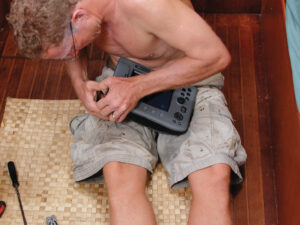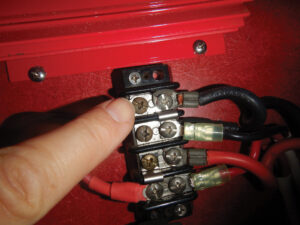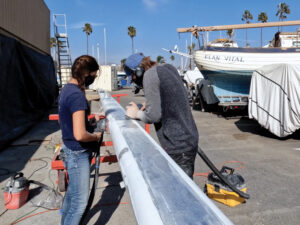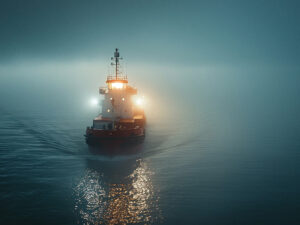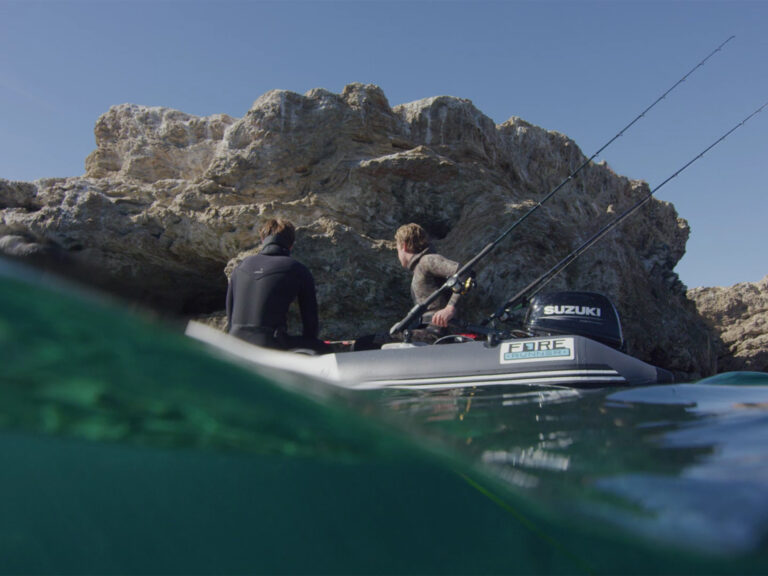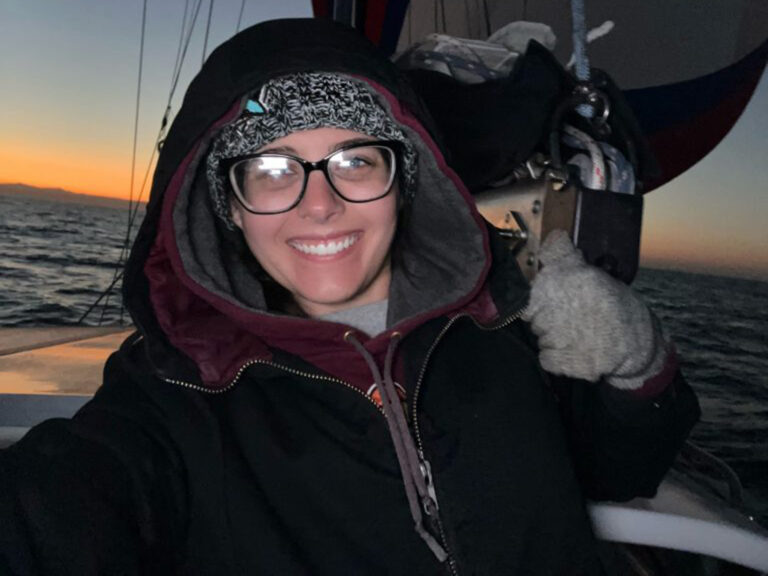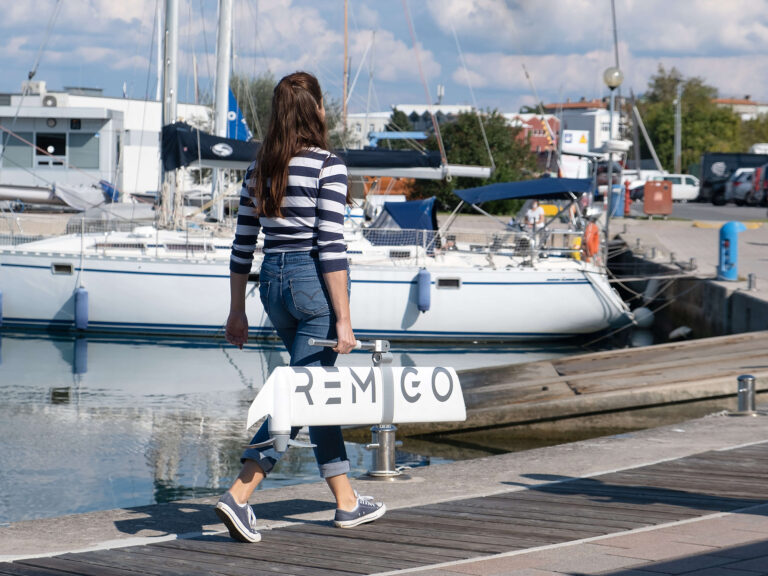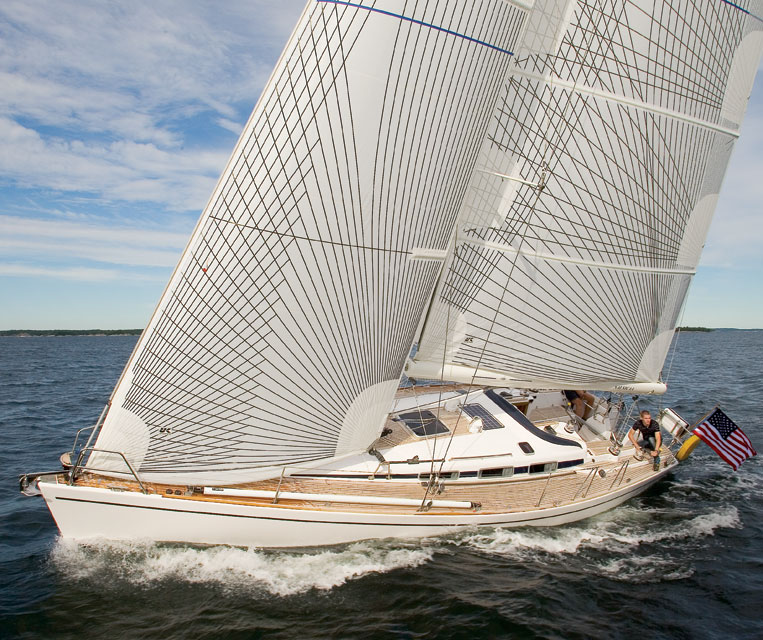
One of the largest expenditures a cruising sailor will ever face is upgrading the yacht’s power plant. Not the one under the companionway—the ones set off the mast. As a former sail consultant for Hood Sails, I know that when it comes to new sails, cost is a primary concern for many sailors. The cheapest sails, however, aren’t always the best value.
Sailmakers and sailcloth manufacturers understand the importance of knowing how the customer’s boat and sails will be used. In addition to price, other criteria sailors should consider are durability, over time or miles; ease of handling when flaking; in some instances, the sail’s weight (can the owner, if necessary, move it around on deck?); and, in the case of an overlapping headsail, its chafe resistance. And, of course, a new suit of sails should be able to withstand the occasional “Uh-oh” moment and have the ability to be regularly reefed and still retain proper shape, which is imperative.
If you’re in the market for a new sail, you need to understand the various options available, both in types of sail materials and in sail design, so you can pose the right questions to your sailmaker and understand their recommendations before purchasing.
Since the 1950s, the default material for cruising sails has been Dacron sailcloth. But as boats got larger and more performance oriented—and their sails became highly loaded— sailmakers and cloth manufacturers developed and used fabrics that could better retain their shape. Today, sailors have essentially two material options, Dacron or laminates, the latter of which are built using a variety of specialized fibers.
In the United States and abroad, four major suppliers of sailcloth—Dimension Polyant, Bainbridge International, Challenge Sailcloth, and Contender Sailcloth—provide sailmakers with Dacron and laminate cloths and related materials to build strong, state-of-the-art headsails and mainsails.
Reliable, Affordable Dacron Sailcloth
Dacron sails are made from polyester fiber, which exhibits two primary sets of engineering properties: either high or low tenacity. The strengths of these fibers include their initial recovery from stretch; the break load for their size; resistance to chafe, exposure to ultraviolet light, and flex; reasonable cost; and minimal shrinkage when heated. High-tenacity fiber is superior for sails in every category, but it costs more, which is why there’s a wide discrepancy in price between low-tenacity Dacron sailcloth and its high-quality counterpart.

Obviously, high-tenacity Dacron makes better cruising sails. The cost difference between a “value” cloth and a “premium” one, both from the same supplier, can be significant, close to 100 percent for some 8-ounce Dacron sail fabric that I’ve seen ($7 per yard versus nearly $15 per yard). Today, however, most sailcloth manufactured for the U.S. market is high-tenacity.
Dacron sailcloth that’s suitable for use in a crosscut sail is by far the most widely produced. Crosscut construction is easily the simplest way for a sailmaker to build any sail. It essentially involves stitching together horizontal panels of cloth that are stacked from the foot to the head.
Cloth for this style of construction is commonly called fill-oriented. The “fill” is the fiber that runs across the roll of cloth and, in the case of crosscut sails, is the thicker and less crimped direction. (Crimp refers to the S-curves caused by the weaving process.) When producing this cloth, the fill is pre-tensioned in the weaving process, and each strand of yarn is kept relatively short, since the width of a roll of cloth measures, at most, 6 feet. On the other hand, the warp—the thread that’s woven through the fill—might measure a couple of hundred feet in length.
Crosscut construction wastes very little cloth and is the fastest way to fabricate a sail; the seams between panels also offer many opportunities to design shape in the sail. The vast majority of modern boats use Dacron sails.
Recently, Challenge Sailcloth developed a Dacron product for use in radial-panel layout. North Sails also has its own version of Dacron, called Radian. In both materials, the warp, or long yarns, are or should be thicker than the fill.
Radial polyester fabric provides sailmakers with the opportunity to design and build triradial sails in woven material. Why is this important? The simple answer is that Dacron is the most durable fabric in absolute terms and that the radial-construction option can accommodate the higher loads placed upon larger or more performance-oriented sails. Sailmakers orient the sail’s panels to derive the shape of the sail and retain it over time. The radial corners are intended to minimize the so-called bias load—the 45-degree axis diagonally across the roll. The point to remember is that if you’re in the market for a sail, remember that the sailcloth in a triradial sail and the sailcloth in a crosscut sail are woven differently and aren’t interchangeable. Discuss the pros and cons of each with your sailmaker before placing an order.
Understanding Laminate Sail Materials
Laminated sails were first introduced in the early 1970s. The Australian 12-Meter Southern Cross tried using Kevlar fibers laminated to film and built as a crosscut sail before the 1974 America’s Cup. These early attempts at laminated sails proved to be unreliable—they were prone to break without notice—and were never used in competition. However, sailmakers realized the potential, and since then, building sails using several versions of laminated fabric has become the default fabrication method for racing and high-performance sails. The goal is a stretch-resistant, shape-holding, lighter sail that’s still affordable.
With laminate sails, there are many more components to the cloth, and sailmakers market their products under different names, which can be confusing. But reduced to the basics, the elements of laminated sailcloth are not unlike the components in the layup of a fiberglass boat; these include fibers, an adhesive, and a core.

Currently, there are eight different fibers used in sailmaking: carbon fiber, Spectra/Dyneema, Twaron, Technora, Kevlar, Vectran, polyester, and Pentax (which is basically “Dacron on steroids”). Only three of these—Dacron, Vectran, and Spectra—can be readily woven into a viable sail fabric. The remaining fibers are incorporated into a fabric in two basic ways; more on this in a moment.
Mylar film, the sheet form of polyester, is at the core of laminate sails. The film acts as a base to which everything else is glued to form the finished product. In addition, there is a specialized fabric called taffeta that’s used to provide chafe protection to the Mylar, as Mylar alone isn’t particularly durable and doesn’t respond well to chafe or sunlight. Taffeta, a woven polyester fabric consisting of small-diameter fibers, is glued onto the Mylar film—sometimes on one side, sometimes on both, depending on the sail’s intended use.
Finally, there’s a layer called the scrim. This is a combination of fibers—made entirely of Spectra, a Spectra/carbon blend, or consisting of other materials—driven by the sail’s intended use. The fibers in a scrim are assembled in combinations of angles in relation to each other and with different degrees of separations between the fibers. The scrim is designed to support the various secondary loads at work on a sail.
Historically, laminated sails of any construction method were usually replaced when the fibers delaminated from the film or the film itself broke down. Better glues and application methods, and the introduction of taffeta, largely addressed these two problems. Today, it’s virtually unheard of for a sail to fail because the fiber collapsed.
Two fundamental ways exist to make the laminate sail fabric. In one, the entire fabric is manufactured by a cloth company and arrives at the loft as a roll, known as roll goods. In building sails with roll goods, the laminated cloth is cut into panels that are then sewn together in one of three patterns: triradial, biradial, or crosscut. From the consumer’s perspective, panel configuration, for the most part, is a low priority, although there may be a small price difference among them. Your sailmaker can provide more information.
Load-Path Sails
Prior to the late 1980s and the introduction of North’s 3DL sails—so-called molded sails—sailmakers and cloth manufacturers were working on their own versions of what has become known as load-path or string sails, which is the other way of making a laminate fabric. Essentially, continuous fibers are glued down on a Mylar film in computer-generated paths engineered to handle the loads placed on the sail. Load-path construction eliminates the break in the fibers present in a sail fabricated from roll goods, where at each seam the fibers terminate and start again in the next panel.
CAD stands for computer-aided design, and CAM stands for computer-aided manufacturing; the shape of a load path sail is designed using the CAD elements of a CAD/CAM system. There are two stages to the sail-design process: aerodynamic shaping and engineering. After the sail is both designed and engineered, the basic sail skin, or Mylar, is crosscut; then each panel is glued to its mate using high-strength glue. With the film spread flat on a floor, the fibers are overlaid onto the Mylar sheet. Different sailmakers use proprietary techniques to unite the glue, the fiber, and the film as a working sail.
The one exception to this flat-floor method is North’s 3DL product, in its various versions. At North, the Mylar film is still cut and glued together, but it’s then laid onto the mold, a huge articulating machine that’s programmed to assume the same shape as the finished sail. The fibers and the rest of the components are laid onto the film on the mold using computer-controlled tooling. The whole sail is then pressurized and heated in much the same way as a hull or spar is produced in an autoclave.
These load-path sails thus combine making the sail with making the fabric, as both occur at the same time. Once the complete skin or membrane is cooked, it’s removed from the mold, and then the rest of the sail’s components—batten pockets, luff tape, numbers and lettering, headboard, and so on—are incorporated into a finished product.
Placing an Order for New Sails
Sailors have many things to consider when contemplating the purchase of new sails, especially laminated ones, but there are a few things to remember.
Generally speaking, in terms of durability, most sailmakers assume that three to five years is a reasonable life span for laminated sails, though many have clients who’ve gotten many more years of service. Incredibly, the threshold for many high-performance racing laminates is measured in hours.
For the most part, load-path sails feel smoother. In the assembly of the many panels of the sail made from roll goods—a practice in which the pieces are glued together by hand, which is an acquired, imperfect skill—the finished product can feel bumpy, and the seams often don’t lie flat when the sail is flying. These issues are minimized with load-path sails.
Pricewise, load-path sails are generally more expensive but retain their original shape longer. Their performance is better right out of the bag. And load-path sails are considerably lighter than laminate sails built with other methods.
We’ve introduced many terms and technologies here, but when you go to order sails, the list of items you need to communicate to your sailmaker are straightforward. Be clear about how you actually use your boat—how much, if ever, you race or head offshore; how often you sail in heavy weather; how long you intend on keeping the boat; the true-wind conditions of your most frequent cruising grounds. And of course, be crystal clear about your budget.
Sailmakers are, at heart, sailors themselves, and they love shooting the breeze about boats and sailing. Find one you trust. The ever-evolving technology in sailcloth and construction is fascinating, but at the end of the day, as with most transactions, buying sails is about forging relationships.
Joe Cooper is a former sailmaker who’s sailed and raced boats ranging from dinghies to America’s Cup contenders. Currently a sailing coach and consultant, he lives in Middletown, Rhode Island.

